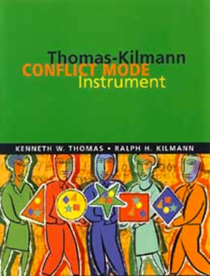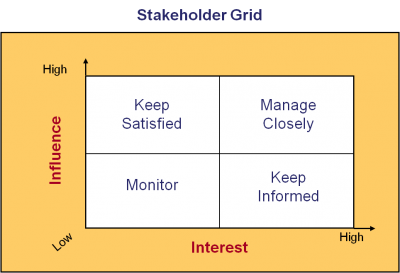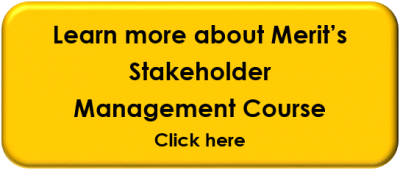 Previously, we wrote about how resolving conflict often has the side benefit of building a cooperative bond — even loyalty — between the factions. As each side gains a deeper understanding of the others’ viewpoints, respect builds and morale improves. Cooperative, low stress interactions, create a fertile environment for productive brainstorming, ultimately boosting the health of your organization.
Previously, we wrote about how resolving conflict often has the side benefit of building a cooperative bond — even loyalty — between the factions. As each side gains a deeper understanding of the others’ viewpoints, respect builds and morale improves. Cooperative, low stress interactions, create a fertile environment for productive brainstorming, ultimately boosting the health of your organization.Being respectful to others, being open to hearing their perspective, and taking the time to understand their objective are very important, but you’ll need more knowledge in your toolkit to dispel conflict when the conflict gets tough. So, let’s dig deeper today.
How can you demonstrate that you are being respectful and open and trying to understand the other’s perspective?
Here are the top 5 proven techniques you can add to your toolkit:
- Ask questions about the other person’s recommendations or point of view in a sincere, non-judgmental manner. Drill down to make sure you totally understand all of their objectives, concerns, and potential obstacles that you may both face.
- Replay or paraphrase their points back to show your understanding, and ask for confirmation that you “got it.”
- Make sure your body language is open and consistent with your words. If they’re not, people instinctively believe your non-verbal message over the spoken word.
- Even if you don’t agree, be sure to acknowledge that you hear and understand the other person’s points.
- It wouldn’t hurt (and yes, it could really help) to verbalize some of your “opponents” points that you think are good, smart and, or useful. A sincere compliment, or statement of approval and recognition will go a long way towards resolving conflict.
 In Part 3 of this series, we’ll examine the five conflict styles that help people understand their own responses as well as diffuse conflict with others. Specifically, we’ll look at the five conflict styles that Kenneth W. Thomas and Ralph H. Kilmann identified and can be assessed in the Thomas-Kilmann Conflict Mode Instrument (TKI), a globally accepted, widely used diagnostic assessment for resolving conflict.
In Part 3 of this series, we’ll examine the five conflict styles that help people understand their own responses as well as diffuse conflict with others. Specifically, we’ll look at the five conflict styles that Kenneth W. Thomas and Ralph H. Kilmann identified and can be assessed in the Thomas-Kilmann Conflict Mode Instrument (TKI), a globally accepted, widely used diagnostic assessment for resolving conflict.Understanding the subtleties of conflict and personality styles goes a long way towards elevating an organization’s harmony and effectiveness. At Merit, we frequently facilitate multiple Conflict Management training sessions for our clients where we adjust the level of detail to group (i.e., customer service reps, new managers, and the senior team.) For more information, please contact Jim Wynne at jwynne@meritcd.com or call 610-225-0449.
 I aspired to broaden my career and went back to school for a Masters in Leadership Development about 12 years ago. Through a confluence of introductions, opportunities and also being an adjunct instructor at Drexel University, I joined one of my cohort’s businesses, Merit Career Development. Initially, I began helping them with a new branding initiative, but in an “Ah Ha” moment we realized that I’d likely be a strong trainer for Merit, too. We were right. I have been running corporate trainings for Merit now for five years and I love it! But here’s the surprise: one of my favorite courses to facilitate, is Conflict Management (followed closely by Critical Thinking & Decision-Making.)
I aspired to broaden my career and went back to school for a Masters in Leadership Development about 12 years ago. Through a confluence of introductions, opportunities and also being an adjunct instructor at Drexel University, I joined one of my cohort’s businesses, Merit Career Development. Initially, I began helping them with a new branding initiative, but in an “Ah Ha” moment we realized that I’d likely be a strong trainer for Merit, too. We were right. I have been running corporate trainings for Merit now for five years and I love it! But here’s the surprise: one of my favorite courses to facilitate, is Conflict Management (followed closely by Critical Thinking & Decision-Making.) Project managers have to be expert negotiators, able to forge agreements between people who often have competing agendas. For example, the sales team may be determined to speed up a project so that it launches before the holiday shopping season, while Product Development wants to delay long enough to include a hot new feature. Meanwhile, the development team warns that a change in either schedule or scope will wreak havoc on the work they’ve already done. Whatever the dynamics, the project manager has to labor between parties to develop an acceptable solution.
Project managers have to be expert negotiators, able to forge agreements between people who often have competing agendas. For example, the sales team may be determined to speed up a project so that it launches before the holiday shopping season, while Product Development wants to delay long enough to include a hot new feature. Meanwhile, the development team warns that a change in either schedule or scope will wreak havoc on the work they’ve already done. Whatever the dynamics, the project manager has to labor between parties to develop an acceptable solution. A communication plan is an essential tool for project managers to plan for resources, establish deadlines and reduce the likelihood of costly surprises. Project managers can use communication plans to create goals, set expectations, allow room for criticism and enable a dialogue for all stakeholders.
A communication plan is an essential tool for project managers to plan for resources, establish deadlines and reduce the likelihood of costly surprises. Project managers can use communication plans to create goals, set expectations, allow room for criticism and enable a dialogue for all stakeholders.
